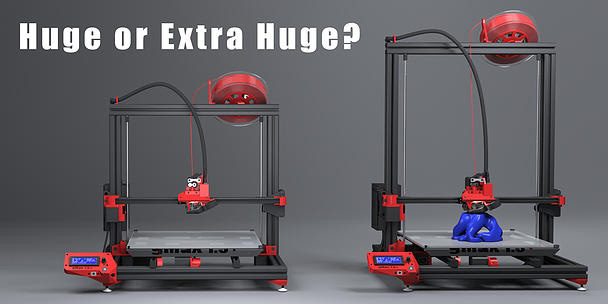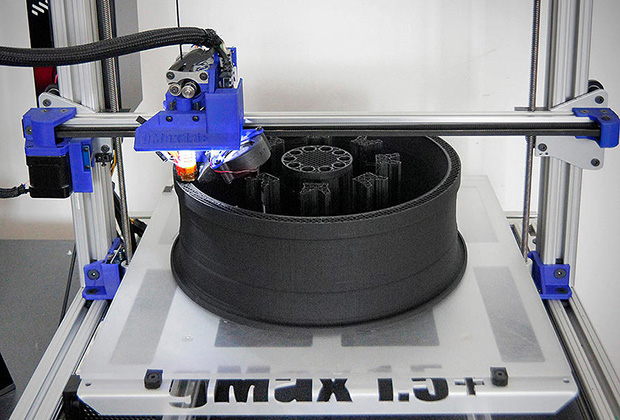Editor’s Pick: Big Build Area at Core of Desktop 3D Printers

The gMax series of large-format desktop 3D printers has a print volume ranging from 16 x 16 x 12 in. and 16 x 16 x 21 in. Image courtesy of gCreate LLC.
Latest News
September 2, 2015
 Here’s a neat item that trundled in over the bit stream recently. It’s a great example of what makes the Pick of the Week a fun column to write. And if you’re an entrepreneur or someone with a workshop that’s the envy of your neighborhood, this will really grab your attention and could definitely make you the coolest kid on the block.
Here’s a neat item that trundled in over the bit stream recently. It’s a great example of what makes the Pick of the Week a fun column to write. And if you’re an entrepreneur or someone with a workshop that’s the envy of your neighborhood, this will really grab your attention and could definitely make you the coolest kid on the block.
gCreate, an outfit in the emerging hotbed of additive manufacturing technology known as Brooklyn, NY, recently launched its gMax 1.5+ and gMax 1.5 XT+ series of desktop-sized 3D printers. gCreate sprang to life in part thanks to Kickstarter a few years back. The gMax 3D printers just seem to incorporate that ethos: The marketing isn’t particularly slick, albeit there are some good videos on the website, but the products seem particularly tuned to real-world users.
For example, the gMax 15+ series 3D printers use FFF (fused filament fabrication) technology. FFF is a semantic two-step coined by a collaborative project to avoid a trademarked term for an additive manufacturing process that sees molten plastic extruded from a nozzle one layer at a time to build up a model on a platform moving on all axes. As well, the gMax series are compatible with a variety of model slicing software, including the open source, community-driven Slic3r. On the gCreate website, you can download models to 3D print without charge. You get the idea.
Then, there’s the print volume: 16 x 16 x 12 in. for the gMax 1.5+ and 16 x 16 x 21 in. for the gMax 1.5 XT+. That’s big enough to 3D print the 14-in. tire rim up there at the top of this message. gCreate has tested more than 50 materials, and so the 3D printers are known to handle PLA (polylactic acid), ABS (acrylonitrile butadiene styrene) and materials like Stainless Steel PLA from Proto-pasta, EcoPLA from FormFutura and NinjaFlex from Fenner Drives. Print layer thickness, incidentally, ranges from 80 to 360 microns, and you can set layer heights in 40-micron increments to get the results you want.
Also cool is that these 3D printers have the ability for a dual extruder add-on and a carbon fiber printed parts option. With these upgrades, you can avail yourself of an experimental option the company offers that lets you do 2D pen plotting on paper with your 3D printer. That kind of ingenuity and flexibility can boost your garage workroom's capabilities in a single step. The brag factor is pretty high there too.
You’ll find a video showing off that 2D plotting action linked at the end of today’s Editor’s Pick of the Week write-up, where you can also learn more about gCreate’s gMax 1.5+ and gMax 1.5 XT+ 3D printers. Let me add that they’re affordable, but since your junk mail filter probably overreacts to any mention of greenbacks, I’ll skip that here. You’ll find those details in the main write-up. This is definitely worth your time.
Thanks, Pal. – Lockwood
Anthony J. Lockwood
Editor at Large, Desktop Engineering
Subscribe to our FREE magazine, FREE email newsletters or both!
Latest News
About the Author
Anthony J. Lockwood is Digital Engineering’s founding editor. He is now retired. Contact him via [email protected].
Follow DE







